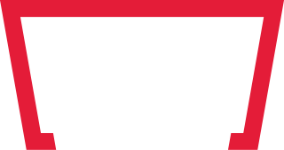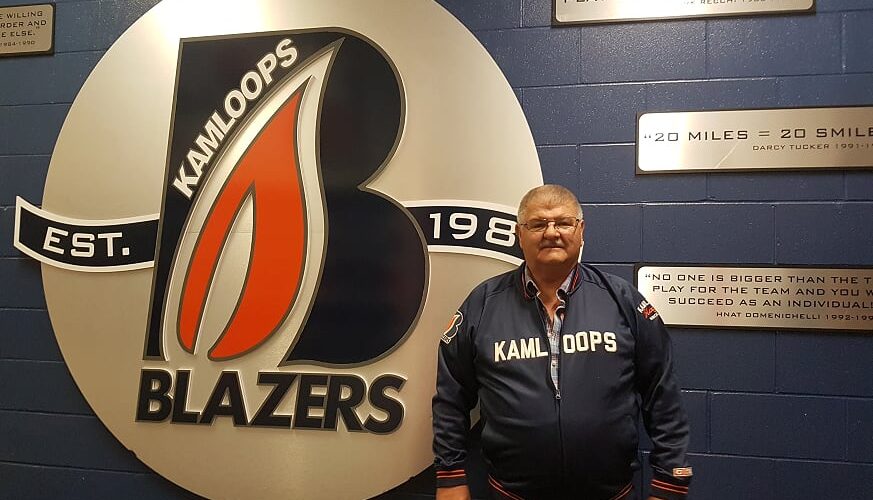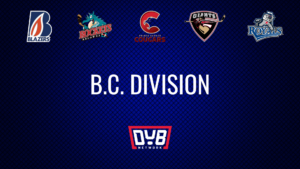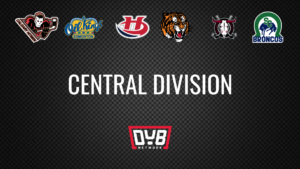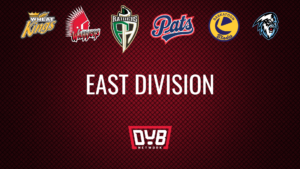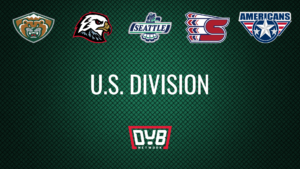29 years. That’s how long Roger Nadeau and the Kamloops Blazers go back. While that may seem significant to you and me, the long-time bus driver doesn’t care for the numbers. “I haven’t counted. I don’t like to keep count,” Roger insists with a hearty laugh.
Like many professional drivers, Roger’s career has taken him down a number of different paths. If you have spent any time in Kamloops during the summer, you have likely seen a convoy of buses transporting tourists fresh off the Rocky Mountaineer. When Roger isn’t driving the Blazers around, he’s in his office overseeing Thompson Valley Charters, a major player in the Kamloops tourism industry. “I bought this company about a year ago now. We’re into charters.”
“I started [driving] professionally in 1974, but not buses — I’m also a truck driver. I own trucks too.” Roger’s tenure with the Blazers, however, wouldn’t start for another 11 years.
“My first trip with the Blazers was in 1985 with [Ken] Hitchcock. Some years, I don’t work because I’ve had other businesses where I just had no time to do it, but I’ve been driving steady now for the last four seasons. That was my first trip in 1985. I’ve done Memorial Cups, I’ve done it all.”
While Roger’s presence with the Blazers may be hit or miss throughout those 29 years, he has experienced his fair share of moments while hauling one of the most decorated junior hockey teams of all-time.
Even with all that experience, the job can present its challenges. “It’s still tough at times. There’s some long days, but I gear up for it. I’ll typically show up at the arena at about 6:30 with the bus and I’ll back it into my spot and go watch the game. I have to watch the game.”
What happens in the arena is out of his control, but once the team is back on the bus, it’s another story. “I’m in charge of the bus. It’s as simple as that — what I say goes. I told them I’m like a ship’s captain; if I wanna marry you, I’ll marry you, and if I wanna divorce you, I’ll divorce you, and they leave me alone,” Roger laughs.
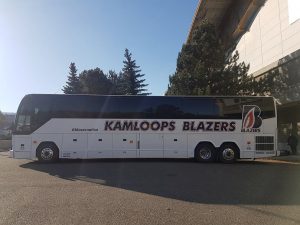
While much of the work is getting from city to city, rink to rink, road trips in the WHL involve extensive planning and coordinating, most of which are dealt with by Roger and Blazers director of hockey operations Tim O’Dovovan. One of the many factors to consider when planning a trip is the legal standards for hours worked in a day, something that is tracked by logbooks in the buses and differs between Canada and the United States.
In Canada, Roger and other bus drivers are able to work 16 hours a day, with 13 of those hours behind the wheel. South of the border, however, is a different story. “In the States, it’s only 10 hours for driving. 14 hours on duty and 10 hours driving. So I really have to watch my p’s and q’s when we go to the States. But I’ve been doing this so many years that I can tell you how long it takes to get from point A to point B without even thinking about it.”
After spending a few decades traveling across Western Canada and the northwestern states, it comes as no surprise that Roger has a few favourites on the road, and no, we here at DUBNetwork are not affiliated with, or financially compensated by, any of the following locations. For grub, no competition, it’s “The Hideout” in Red Deer.
If you have read any draft profiles or tuned in to any of Don Cherry’s Chats With Top Draft Prospects, you may have noticed a specific pattern in many hockey players’ pregame meals. “Pasta and chicken, pasta and chicken,” Roger laments. “I usually get tired of pasta and chicken and they’re [the Blazers] pretty good with me, so all of a sudden I’ll be eating a steak and all the boys are over at my table because I’m not made for pasta and chicken.”
As for rinks in the WHL, it’s another easy decision — the SaskTel Centre in Saskatoon. Roger praised the 31-year-old arena: “I love it. A lot of these new buildings, these new barns, they got no character to them.” Aside from the Calgary Hitmen and Edmonton Oil Kings, who both play in NHL arenas, the SaskTel Centre has the second-largest capacity in the WHL after Portland’s Moda Centre, which houses both the Winterhawks and the NBA’s Portland Trail Blazers.
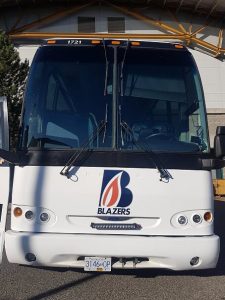
On the other hand, Brandon’s Keystone Centre, originally built in 1973, presents one unique challenge for visiting drivers: “When you first drive into the arena, they have a ramp that goes down and there’s a door there because they want to keep [the] wind out in the middle of winter, and you have to drive probably four bus lengths down into the bottom and then you gotta back out. They didn’t design it for a bus,” Roger laughs.
From Prince George to Portland to Winnipeg, Roger and the other WHL bus drivers share the communal responsibility of transporting their teams in a safe and efficient manner. “We’re all kind of a tight-knit family. We know each other. Somewhere down the line, we’ve probably hooked up and had coffee so we all know each other, and that’s one of the big things.”
Beyond the scope of their job, bus drivers all tend to share one other thing in common: “Of course we all like a win. It’s a lot more fun hauling a winning team around. Hauling winning teams around, it’s a different attitude on the bus. Everybody’s really joyful and happy.”
And Roger likes to add a little fuel to the fire when he can. “It’s pretty quiet on our bus if we lose, but when we win, it’s a different story. Traditionally we honk the horn two times when we’re leaving, and that gets the guys going. You should hear the bus, they just love it.”
